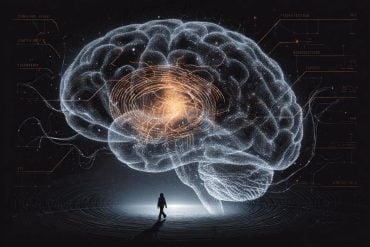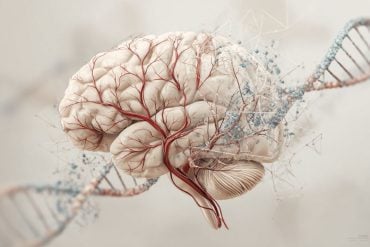Summary: A new study found brain differences between adults and children that potentially explain developmental differences in social interaction understanding.
The study showed that children and adults might employ different strategies for interaction understanding: Adults rely more on observable, body-based information, while children engage more in effortful reasoning about what others are thinking and feeling during an interaction.
Key Facts:
- A functional magnetic imaging study compared how children and adults process social interactions.
- The study involved scanning the brains of children (6–12 years old) and adults (18+) while they viewed brief videos of two human figures interacting.
- The study found that in adults, activation to social interactions in the STS is related to connectivity to brain areas involved in processing static and dynamic body information, while in children, STS activation is related to connectivity to brain areas involved in making deeper social judgments about other people’s hidden thoughts and beliefs.
Source: Bangor University
Understanding the meaning of social interactions is an important human ability that relies on deciphering different kinds of social information. For example, perceiving body and face information, and understanding others’ intentions.
Through extensive social experience, adults can understand complex social scenarios with relative ease. By contrast, children must learn to master complex social abilities, and understanding how this is achieved is an important goal for developmental psychology and neuroscience.
A recent collaboration between researchers at Bangor University (Kami Koldewyn) and University of Coimbra in Portugal (Jorge Almeida; Jon Walbrin—previously Bangor University) reveals a striking brain difference between adults and children that potentially explains developmental differences in social interaction understanding.
The functional magnetic imaging study—recently published in the Journal of Neuroscience—involved scanning the brains of children (6–12 years old) and adults (18+) while they viewed brief videos of two human figures interacting.
Activation responses in the superior temporal sulcus (STS)—a brain area that is involved in the visual processing of social interactions—were measured and combined with measures of connectivity to other parts of the brain.
The results show that in adults, activation to social interactions in the STS is related to connectivity to brain areas involved in processing static and dynamic body information; in children however, STS activation is related to connectivity to brain areas involved in making deeper social judgements about other people’s hidden thoughts and beliefs (a process known as “mentalising”).
Lead author Jon Walbrin explains, “Most previous social neuroscience studies have focused on measuring responses to other people as individuals. But more recently there has been an increased interest in understanding brain responses to others in the context of social interactions. However, very little is currently known about how such responses develop during childhood.”

“These results suggest that children and adults might employ different strategies for interaction understanding: Adults rely more on observable, body-based information, while children—with less social experience—engage more in effortful reasoning about what others are thinking and feeling during an interaction. This likely reflects the process of learning to understand interactive behavior.”
Kami Koldewyn added, “The current results help us better understand how brain networks involved in social cognition change across development. Most adults don’t need to think to understand social interactions; they get the gist of even complex social encounters simply through information that can be observed directly.”
“Children, who have much less social experience, may need to think about the intentions and feelings of the interactants to understand such social scenes. The changes we see in the networks that support social understanding across development likely reflect brain changes as children learn about the social world, including how to predict and understand the social encounters they observe around them.”
These results are an important step towards better understanding how the brain develops across childhood, and the authors suggest that future efforts should be made to compare similar responses during adolescence as well as later adulthood.
About this social neuroscience research news
Author: Press Office
Source: Bangor University
Contact: Press Office – Bangor University
Image: The image is credited to Neuroscience News
Original Research: Closed access.
“Alternative brain connectivity underscores age-related differences in the processing of interactive biological motion” by Jon Walbrin et al. Journal of Neuroscience
Abstract
Alternative brain connectivity underscores age-related differences in the processing of interactive biological motion
Rapidly recognizing and understanding others’ social interactions is an important ability that relies on deciphering multiple sources of information; for example, perceiving body information and inferring others’ intentions. Despite recent advances in characterizing the brain basis of this ability in adults, its developmental underpinnings are virtually unknown.
Here, we used fMRI to investigate which sources of social information support superior temporal sulcus (STS) responses to interactive biological motion (i.e. 2 interacting point-light human figures) at different developmental intervals in human participants (of either sex): Children show supportive functional connectivity with key nodes of the mentalizing network, while adults show stronger reliance on regions associated with body- and dynamic social interaction/biological motion processing.
We suggest that adults employ efficient action-intention understanding via body and biological motion information, while children show a stronger reliance on hidden mental-state inferences as a potential means of learning to better understand others’ interactive behavior.






